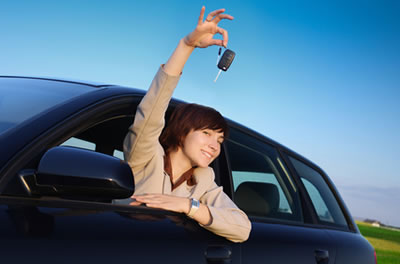
If you live in an area where the weather turns bad at least some of the time during the winter months, you need to adjust your driving style and adopt other habits to keep yourself safe. Winter can throw some driving challenges your way, but knowing how to handle those challenges will make your winter driving experience less eventful.
1) Keep your vehicle clear. Whenever you leave your vehicle outside, whether during the day or night and snow falls on it or ice forms on the windows, you need to clear it off before you get in and start driving. This can take time, so plan ahead. Failing to clear off your windows means you cannot see properly, which can easily lead to a collision. Relying simply on your windshield wipers and defroster to clear off ice or snow is dangerous. You should always keep an ice scraper in your car and clear off any ice buildup before you start to drive. If at all possible, brush off snow from the hood and roof, since the snow can spray up or fall down on the windshield while you are driving.
2) Slow down and give yourself plenty of space. Winter means snow or ice is present on the road, and that diminishes your car's handling and stopping abilities. You must not drive as quickly as you would in warm weather to avoid losing control of your vehicle. Leave more space between you and the vehicle in front of you to compensate for your vehicle's increased stopping distance.
3) Use fog lights when necessary, if you have them. Fog lights help illuminate your pathway when clouds cover the sky and the nights last longer. Fog lights also help other drivers spot your vehicle when visibility is poor, such as during a snowstorm, so always turn them on in such conditions. Some vehicles come equipped with one of more rear fog lights, which consist of an extra-bright red light in the rear of the vehicle, helping drivers behind see your vehicle in poor visibility conditions.
4) Steer into slides. If you have the misfortune of sliding your car because of snow of ice on the road, your gut reaction is to slam on your brakes and steer in the opposite direction you are sliding. You must calm down and not panic when you vehicle starts to slide. Steer into the slide, which will almost immediately stop your vehicle's momentum, allowing you to regain control.
5) Maintain your gas level. One of the big dangers of winter driving is that you can become stranded during a large snowstorm or from an avalanche blocking a road. When this happens, your only source of heat might be your vehicle's heater, which requires you to run the engine. If help takes hours to arrive, you need to have plenty of gas. As a general rule of thumb, you should not allow your vehicle's gas to drop below half a tank at any time.
6) Watch your tires. Your tires are one of the most critical pieces of safety equipment on your vehicle, since they affect both your handling and breaking ability. If your tires' tread wears too low, you lose traction on slippery surfaces. Underinflated tires also lose traction on slippery surfaces more easily. If your car is not outfitted with a tire pressure monitor, you need to check them with a pressure gauge on a regular basis and fill them with air as needed.
7) Stay home when necessary. Sometimes the road conditions are so bad that nobody, no matter how capable their vehicle is or adept they are at driving in poor conditions, should be on the road. When the weather turns particularly bad, stay at home unless you absolutely must go somewhere. Remember that even if you are careful, other people may not be as careful and collide with your vehicle.



